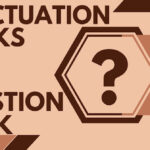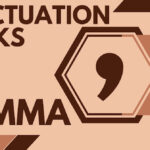Putting It in Parentheses: A Comprehensive Guide to Using This Essential Punctuation Mark
Introduction
Written communication is an essential part of our daily lives, from emails to official documents, social media posts to academic papers.
Effective written communication requires not only proper grammar and syntax but also the appropriate use of punctuation marks.
Punctuation marks are a set of symbols that help readers understand the intended meaning and tone of the written text.
Definition of Punctuation marks
Punctuation marks are a set of standardized symbols used in written language to clarify meaning, convey tone and mood, and establish sentence structure.
The most commonly used punctuation marks include commas, periods, question marks, exclamation points, semicolons, colons, quotation marks, apostrophes and parentheses
.
Punctuation is especially important when it comes to formal writing such as academic papers or professional documents.
It can be the difference between effectively communicating your intended message or causing confusion for your reader.
Importance of using Punctuation marks in written communication
In addition to ensuring clarity for readers, proper use of punctuation can also add emphasis to certain words or phrases and help convey tone.
Overview of Parentheses ()
Parentheses () are one of the most commonly used punctuation marks in written communication.
They are used to enclose certain types of information within a sentence that is not essential but provides additional clarity or context to the reader.
Parentheses can be used for a variety of purposes, such as to clarify or elaborate on something, to provide examples, or to contain citations.
Definition and Purpose of Parentheses
Parentheses are defined as punctuation marks that are used to enclose words, phrases, or clauses within a sentence.
They are also known as round brackets or simply brackets.
The purpose of using parentheses is to provide additional information that is not essential for the sentence but may be helpful in clarifying the meaning.
For example:
“The concert (which was sold out) was amazing.”
In this sentence, the phrase “which was sold out” is enclosed in parentheses.
This provides additional information about the concert but does not change the main meaning of the sentence – that it was amazing.
Different Types of Information That Can Be Enclosed in Parentheses
There are many different types of information that can be enclosed in parentheses, including clarification and elaboration on a point already made within the sentence; examples and illustrations; acronyms and abbreviations; citations and references; and more.
For example:
“John Smith (the CEO) will be attending the meeting.”
In this sentence, parentheses are used to provide additional information about who John Smith is – namely that he is the CEO.
This adds context for readers who may not know who John Smith is.
Overall, parentheses serve an important role in written communication by providing additional clarity and context where needed without disrupting the flow or meaning of a sentence.
When used properly, they can make writing clearer and more concise.
Uses of Parentheses
Parentheses are versatile punctuation marks that can be used in a variety of ways to clarify, add information, or make a statement more concise.
One common use of parentheses is to provide clarification or additional information about something mentioned in the sentence.
This can be especially helpful when the writer wants to avoid using a long, complicated sentence.
Parentheses can be used in this case to present an aside or extra information without disrupting the flow of the main text.
For example
consider the sentence
“The concert was amazing.”
This statement is straightforward but it doesn’t provide much detail.
By adding parentheses with additional information, we can give readers a better understanding of what made the concert so special.
“The concert (which was sold out) was amazing.”
Here, we learn that people were so excited about this event that tickets sold out quickly.
Another way parentheses can be used is to provide context for a person’s title or position within an organization.
For instance
“John Smith (the CEO) will be attending the meeting.”
Here, by adding parentheses around “the CEO,” we’ve given readers more insight into John Smith’s role and authority within his company.
Acronyms and Abbreviations
In addition to providing clarification and context for text within sentences, parentheses are also useful for explaining acronyms and abbreviations.
For example:
“The National Aeronautics and Space Administration (NASA) launched a new satellite.”
In this case, by putting NASA in parenthesis after its full name it becomes clear what NASA stands for even if someone isn’t familiar with it from before.
Similarly:
“I need to buy some AA (double A) batteries”.
This example shows that using parentheses provides clarification on what AA means thereby avoiding confusion as some people may not be familiar with ‘double A’.
Citations and References
Parentheses can also be used to provide citations and references in written material.
For example,
“According to a recent study (Smith et al., 2020), the new drug is effective.
Here, the reader knows that the information given precedes from a study conducted by Smith et al. in 2020.
Another example of using parentheses for citations is seen in
“The book ‘To Kill a Mockingbird’ (Lee, 1960) is a classic.”
This statement provides readers with important details about the book, including both its title and author and when it was published.
These examples demonstrate how parentheses can provide clarity and context for readers without being too disruptive to the main text of a sentence or paragraph.
By using them correctly writers can ensure their message is communicated effectively.
Common Mistakes with Parentheses
Parentheses can be a useful tool in writing to provide additional information or clarify a point, but it is important to use them appropriately.
One common mistake with parentheses is overusing them.
When writing, it can be tempting to use parentheses to include every small detail or thought that comes to mind.
However, this can lead to cluttered and confusing sentences.
Another mistake is underusing parentheses. Sometimes writers will avoid using parentheses altogether when they would actually be helpful in providing extra context or explanation.
This can leave readers confused or unsure about the intended meaning of a sentence or phrase.
As with any other punctuation mark, parentheses should be used judiciously and purposefully to enhance the clarity and effectiveness of writing.
Incorrect Placement
Parentheses should always be placed correctly within a sentence for them to serve their intended purpose.
One common error is placing the closing parenthesis in the wrong location, which can change the meaning of a sentence entirely.
For example:
“I love eating pizza (especially pepperoni).
” In this sentence, the parentheses provide extra information about the author’s preference for pepperoni on pizza.
However, if written as
“I love eating pizza especially (pepperoni),” it changes the intended meaning of the sentence by suggesting that pepperoni is being emphasized above all else.
Another mistake is using parentheses in place of other appropriate punctuation marks such as commas or dashes.
While they may seem interchangeable at times, each punctuation mark serves a specific purpose and should be used accordingly for maximum clarity and readability.
It’s important to always double-check placement when using parentheses in writing to ensure that they are serving their intended purpose effectively without introducing confusion or ambiguity into your work.
Conclusion
After reviewing the uses and examples of Parentheses, it is clear that this punctuation mark plays a significant role in written communication.
Parentheses can be used to provide additional information or clarification, as well as to indicate acronyms or citations.
When used correctly, parentheses can improve the clarity and readability of a text.
It is important to note that overuse or incorrect placement of parentheses can distract from the message being conveyed.
Therefore, it is crucial to use parentheses only when necessary and to ensure they are properly placed within a sentence.
Mastering the use of punctuation marks such as parentheses is an essential skill for effective communication.
By understanding their purpose and proper usage, writers can convey their intended message clearly and concisely.
Remembering these key guidelines will help elevate your writing skills and allow you to effectively communicate with your readers.





1 thought on “Parentheses Punctuation Marks”